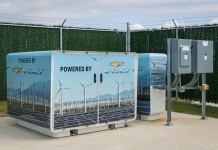Moves by ailing carmakers Chrysler and General Motors to slash their US dealerships will cost tens of thousands of jobs, taking a heavier toll than cuts in production, analysts say.
General Motors, the largest US automaker, said Friday it would seek to eliminate nearly 40 percent of its US dealers, more than 2,300 sales outlets, by the end of 2010 as part of its reorganization to avert bankruptcy.
Chrysler, which has filed for bankruptcy protection, said Thursday it had asked the bankruptcy court to shut down 789 dealers, nearly one-fourth of its sales outlets.
For GM, the decision to close the dealerships, which employ about 50 people each, could translate into the loss of as many as 150,000 jobs — representing a 0.2 percentage point rise in the unemployment rate, Joel Naroff at Naroff Economic Advisors said.
By contrast, the restructuring plans of GM and Chrysler project the loss this year of 47,000 and 3,000 jobs, respectively, in the recession-ravaged economy.
The two struggling automakers have already taken the hatchet to payrolls in the last several years: Chrysler has slashed 32,000 jobs since 2007; GM cut 31,000 in 2008 alone.
David Cole, chairman of the Center for Automotive Research, based in Ann Arbor, Michigan, said the announcements of the dealership closings “brings the issue of the problem of the auto industry to the attention of the entire country.”
The crisis affects not just the hub of the US auto industry in Detroit, Michigan, and its industrial spokes in the Midwest, but directly touches dealerships across the country, from large cities to small towns.
George Magliano, an auto industry specialist at IHS Global Insight, said that unlike factory closings, the shuttering of dealerships “is more painful — it’s more localized.”
“These guys were a source of support of a lot of the community activity,” he said.
“The ripple effect of the dealership closings can be significant, they can be the key employer of the area. You shut them down, and it hurts the revenue base there,” he added.
Cole estimated that each dealership job acts as multiplier, creating three related jobs.
Magliano noted that it was impossible for GM and Chrysler, faced with a severe US auto industry slump in general and their loss of market share, to maintain dealerships at boom-year levels.
Rival Japanese automakers operate nearly half as many dealerships as GM intends to keep.
“They’ve been trying to consolidate dealerships for years, it’s a 10-year process,” Magliano said of the US auto giants.
Naroff said that at least a disorderly dismantling at bankrupt Chrysler was avoided.
“Had they just shut down, then you can multiply the (social) impact by three or four — that’s just Chrysler. With GM you see the disaster was there,” he said.
Naroff noted the “large” impact of the dealership closures on unemployment, but said it would have been bigger without the working capital given by President Barack Obama’s administration to GM and Chrysler to help them through restructuring.
“The fact that money was used to stabilize the situation and give them a chance to have some sort of reasonably controlled and negotiated bankruptcy probably has saved a lot of jobs,” Naroff said.
The Treasury Department acknowledged the “difficult” decisions and stressed Obama’s auto task force had not been involved in deciding which dealers, or how many dealers, would be closed.
“Without the president?s intervention, the entire GM and Chrysler dealer networks could have been lost,” the Treasury said in a statement.








